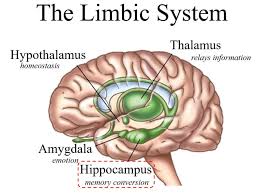Psychology Brain Anatomy
1/27
There's no tags or description
Looks like no tags are added yet.
Name | Mastery | Learn | Test | Matching | Spaced |
|---|
No study sessions yet.
28 Terms
Cerebrum/Cerebral Cortex
the largest part of the brain that is subdivided into lobes and areas that control a variety of brain functions.
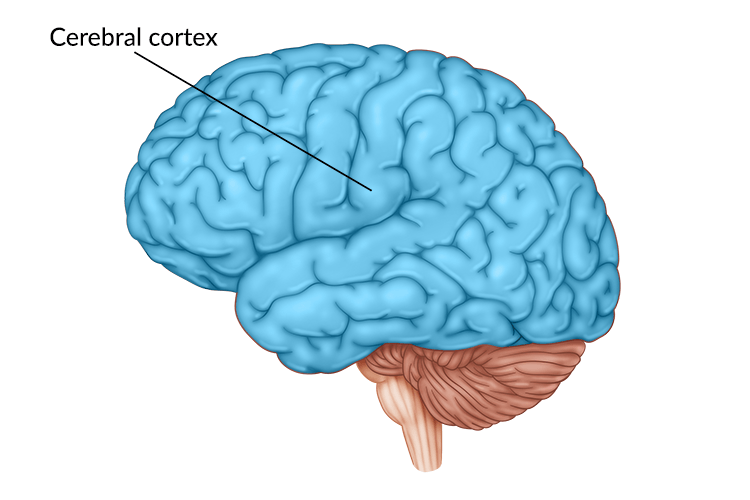
Cerebellum
the part of the brain below the back of the cerebrum. It regulates balance, posture, movement, and muscle coordination
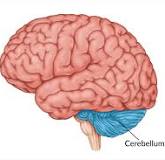
Forebrain: Thalamus
located directly in the center of the brain beneath the corpus callosum, it acts as a relay center for sensory information to higher levels of the brain to interpret (e.g. vision sensory info. 🡪 appropriate area of brain for face recognition)
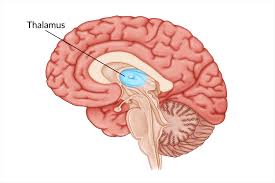
Forebrain: Hypothalamus
this small structure lies below the thalamus, and is important in both regulating physiological functions like body temp. and storage of nutrients. It also is involved with aspects of motivation and emotion including hunger, thirst, sex, and aggression.
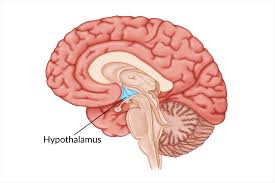
Forebrain: Limbic System
interconnected brain structures that help regulate your emotions and behavior. The structures (also known as components or parts) of the limbic system work together with other brain regions by processing your memory, thoughts and motivations, then tell your body how to respond
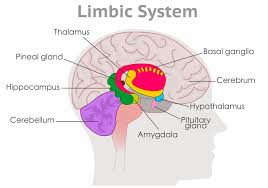
Midbrain: Reticular Activating System
his is located directly in the middle of the brain at the top of the brain stem next to the Pons and below the Hypothalamus. This system is important for attention, sleep and arousal.
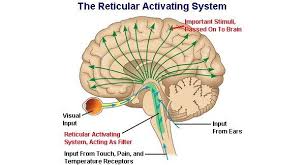
Hindbrain: Pons
connects the brainstem to the forebrain. It is located just above the Medulla Oblongata. Helps regulate body movement, attention, and alertness
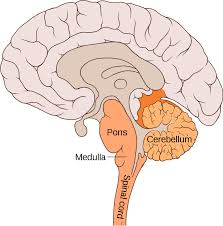
Hindbrain: Medulla Oblongata
the lowest section of the brainstem (at the top end of the spinal cord); it controls automatic functions including heartbeat, breathing, etc.
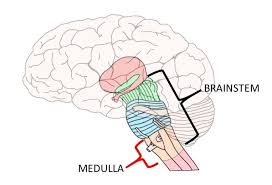
FRONTAL LOBE:Prefrontal Cortex
planning complex cognitive behavior,personality expression, decision making, and moderating social behavior.thoughts/action aligned with internal goals(Executive Function: able differentiate thoughts, good vs bad, same vs different, consequences, defined goals, social control)
Damage:issues with problem solving and memory, less emotional control
Frontal Lobotomy: prefrontal lobotomy (side/top holes in skull)and trans orbital lobotomy(eye sockets)-reacted only to what was in front of them About 50,000 people got lobotomies in the US, most between 1949 and 1952
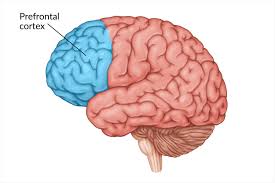
FRONTAL LOBE:Motor Cortex
posterior part of frontal lobe, controls voluntary movement. neurons send signals down spinal cord to muscles, divided into regions (control diff regions of body). also learning movements and coordination
Damage:paralysis or difficulty with volunteer motor control. right side damaged=no left muscle use and vis versa.also effects learning of movements
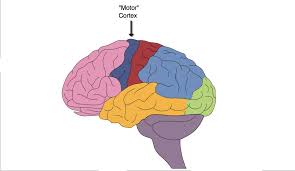
FRONTAL LOBE: Broca’s Area
speech production, language processing, and language comprehension, controlling facial neurons
Damage (Aphasia):unable to put together sentences that are grammatically complex and usually complain few words.generally capable of comprehending language without a problem
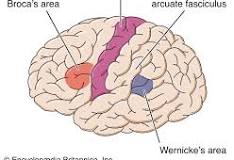
PARIETAL LOBE
near the back and top of the head. do the processing and interpreting of somatosensory input so objects in our external environment through touch and position and movement of our body parts.
Damage: Difficulty with drawing objects, difficulty in distinguishing left from right, spatial disorientation and navigation difficulties, problems with reading and writing, visual attention
Visual Neglect: Right side injury would have a patient with neglect to behave as if the left side of sensory space is nonexistent (although they can still turn left). might fail to eat the food on the left half of their plate, when asked to draw a clock,drawing might show only numbers 12 to 6, or all 12 numbers on one half of the clock face, the other side being distorted or left blank.may also ignore the contralesional side of their body,may frequently collide with objects or structures such as door frames on the side being neglected.
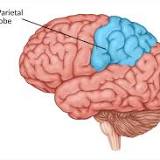
PARIETAL LOBE:Somatosensory Cortex
Overview:processes input from the various systems in the body that are sensitive to touch (several different sensory experiences are involved, including specific sensitivity to pain, pressure, temperature, and the proprioception system).
Damage: a person may experience problems relating to the sense of touch which can be shown as. loss of sensation in some body parts, insensitivity to temperature, or an inability to recognize objects by touch(neurologist can conduct tests to determine the source of the problem so that treatment recommendations can be made to the patient)
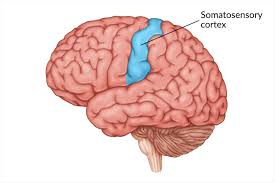
Temporal Lobe
sits behind the ears and are the second largest lobe, commonly associated with processing auditory information and with the storage of memory.believed to be an important role with processing affect/emotions, language, and aspects of visual perception. dominant is in the left side in most people and is for understanding language and learning and remembering verbal information. Non-dominant is typically the right lobe, is involved in learning and remembering non-verbal information
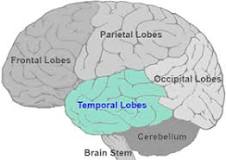
Temporal Lobe:Wernicke’s Area
Overview:comprehension of both written language and speech.responsible for deciphering the speech of others as well as producing coherent language
Wernicke’s Aphasia:little evidence of being able to understand the speech of people around them.often have difficulty with the correct names of specific objects. instead use words that sound similar to the intended one or replacing the name with that of a related object.
-speak in sentences that are grammatically correct but verbally nonsensical.(speak with the normal flow and fluency of correct language, but will use words that are either out of place, irrelevant, or possibly made up
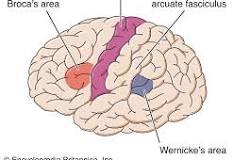
Temporal Lobe:Primary Auditory Cortex
Overview:processes sensory information in the form of sound(not directly or completely responsible for the hearing, essential to processing)
Damage Symptoms:may be able to collect sound stimuli but if a person doesn't have the ability to process sounds,the noise seems to be jumbled and meaningless. some are completely unaware of sound, they still react reflexively to loud or sudden sounds as there auditory processing that occurs below the cortex.
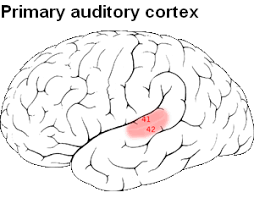
Temporal Lobe:Auditory Association Area
Overview:ack the ability to hear and understand many thing. speech and music.require a great deal of auditory processing. These sensory inputs are organized into something with meaning via the auditory association area.
Damage Symptoms: inhibit their ability to identify the source of sounds. not apple to separate between the rustling of leaves and the ringing of a bell.
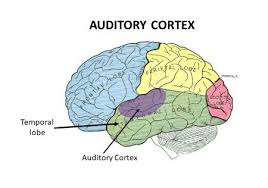
OCCIPITAL LOBE
back of the head,responsible for visual perception( color, form and motion).
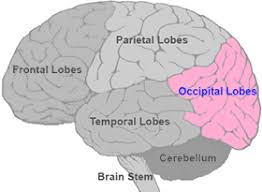
OCCIPITAL LOBE:Primary Visual Cortex
Overview:posterior pole of the occipital cortex, specialized for processing information about static and moving objects. is excellent in pattern recognition.involved in basic sensation of sight, lighting, shapes, pattern
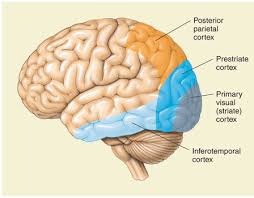
OCCIPITAL LOBE:Visual Association Area
Overview: makes those sensations into something that is recognizable. can often detect basic stimuli but fail to recognize what an object is or its significance.
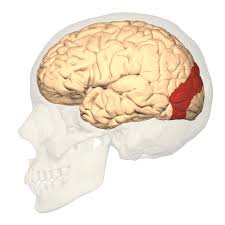
Damages of the Occipital Lobe Visual Agnosia:
can see an object set before them but cannot understand what the object is or what it is used for, aka lacks object recognition.(do not have any structural or neurological damage to the eye, nor is there any erosion in their intelligence that would account for the failure of object recognition)
Damages of the Occipital Lobe Visual Space Agnosia:
unable to recognize an object and differentiate between two similar objects ex:if a shoe and a mitten are placed before someone with apperceptive agnosia, the patient would not be able to identify either object. cannot copy a picture, play a matching game, or even complete a comparison test.
Damages of the Occipital Lobe Associative Agnosia::
can perceive an object using touch, or they will understand the object if it is described to them basically can understand with any other sense then vision.can match like objects but will not understand the function of the objects or even know their names. retains enough visual memory to be able to copy a picture that they have seen
Limbic System
considered a major commonality that we have with other mammals. In fact it is often referred to as the “old mammalian brain.” It is involved in such basic mammal traits as motivation for food/water, sex, emotional behaviors (fear and anger), and memory storage
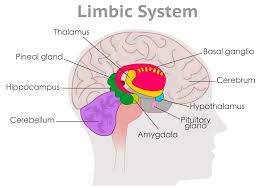
Limbic System:Hypothalamus
Overview:Controls motivational behaviors - eating, drinking, sex, regulation of autonomic system
Damage Symptoms:Changes in appetite/thirst, lack of interest in activities, high/low blood pressure
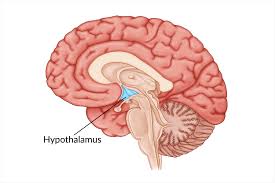
Limbic System:Amygdala
Overview:Forming, recognizing and remembering emotion experiences. Aso remembering emotional expressions
Damage Symptoms:difficulty recognizing personal facial expressions. Less sense of fear in order to avoid bad situations
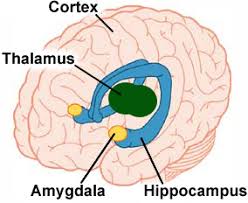
Limbic System:Thalamus
Overview:receives sensory info then some small processing and then passing message on.
Damage Symptoms:difficulty in learning to read, over all processing issues
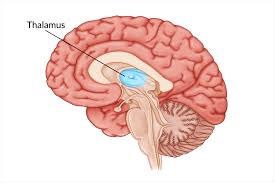
Limbic System:Hippocampus
Overview:memory, many types. Saves them. kind of a storage center
Damage Symptoms:hard time remembering new facts, places, faces, conversations.(like storage is full)
